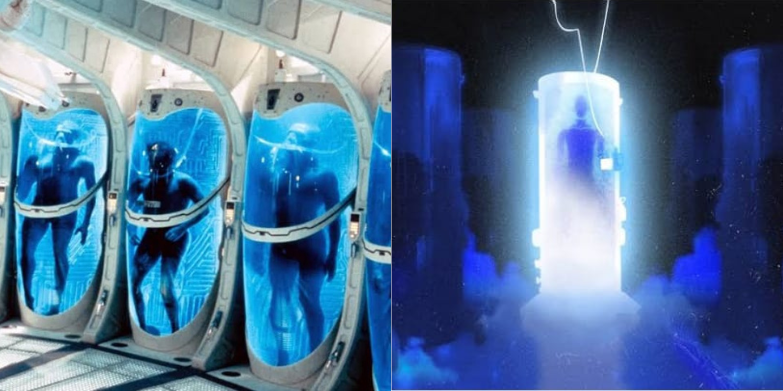Arizona-based company Alcor offers cryonic preservation to its members. This method is the option to freeze their bodies after death, to be revived when future technology makes this possible. Though this has to be complex by hearing. There are many possible ways to preserve the dead bodies in this method. Let us discuss this in detail.
Alcor-The life Extension:
The Alcor Life Extension Foundation, most often referred to as Alcor, is an American nonprofit, federally tax-exempt organisation based in Scottsdale, Arizona, United States. The Alcor foundation was founded by Fred & Linda Chamberlain in 1972. Alcor advocates for, researches, and performs cryonics, the freezing of human corpses and brains in liquid nitrogen after legal death, with hopes of resurrecting and restoring them to full health in the event some new technology can be developed in the future. Cryonics is regarded with skepticism within the mainstream scientific community and has been characterised as quackery and pseudoscience.
By 1990, Alcor had grown to 300 members and outgrown its California headquarters, which was the largest cryonics facility in the world. As of April 30, 2021, Alcor had 1,832 members, including 182 who have died and whose corpses have been subject to cryonic processes.116 bodies had only their heads preserved. Alcor also applies its cryonic process to the bodies of pets. As of February 13, 2009, there were 33 animal bodies preserved.
What is cryonics?
Cryonics is the practice of preserving life by pausing the dying process using subfreezing temperatures with the intent of restoring good health with medical technology in the future. The concept of cryonics was introduced in 1962 by the Founder of the Cryonics Institute, Robert Ettinger, in his landmark book “The Prospect of Immortality.”
Cryonics involves cooling a recently deceased person to liquid nitrogen temperatures to keep the body preserved indefinitely
“Cryonics is much more than just the science of “freezing,” because our objective is life after revival, with renewed youth and extended lifespans. We want to make this a reality.”-Dennis Kowalski – President
Cryonics sounds like science fiction, but it’s based on modern science. Life can be stopped and restarted if its basic structures can be preserved. Vitrification can preserve biological structure very well – much better than freezing. Methods for repairing biological structures at the molecular level can now be foreseen.
Vitrification.
According to Alcor, the best way to preserve a human body is through vitrification, rather than freezing. The goal is to replace the water in the body with cryoprotectant, a kind of medical-grade antifreeze, which prevents ice crystals from forming and damaging the body’s cells. This way, when the deceased person’s temperature is lowered, the body vitrified, turning into a glass-like state, rather than freezing. In this state, Alcor says it can keep a body preserved for decades on end.
When a candidate for cryopreservation arrives at Alcor, their body is thumped and kept on ice while a mechanical thumper keeps blood flowing around their body, all in a bid to minimise cellular damage. But while each of these people has been declared clinically and legally dead, Alcor refers to them as “patients.” .”Legal death only really means that your heart and your lungs have stopped functioning without intervention,” says Linda Chamberlain. “It doesn’t mean your cells are dead, it doesn’t mean even your organs are dead.”
Cryopreservation:
Through a mixture of medicine and mortuary practice, Alcor preserves the bodies (and heads) of the dead by slowly lowering their body temperature and storing them in giant vessels of liquid nitrogen, where they will stay for decades at -196 C.Inside the operating room at Alcor, bodies are prepared for “long-term care.” Here, bodies are filled with cryoprotectant and slowly cooled in a process that takes hours.
Operating room and tools:
Alcor uses a CT scanner to ensure no water or ice remains in the brains of patients. According to Linda Chamberlain, these scans will also be used by “future revival physicians.”The operating room feels like a cross between a hospital and a morgue. The “patients” may be dead, but surgeons work to preserve their bodies for future life.
Cost for preservation:
Alcor offers full-body cryonic preservation for $220,000, the organisation also offers “neuro preservation” for $80,000. In this process, the head is removed from the body and cryopreserved on its own. During the procedure, the cephalon is clamped within this box in a steel ring. A glass cabinet in the operating room offers a glimpse of the more intense parts of the surgical process. Once Alcor’s patients have had their body temperature reduced to liquid nitrogen temperature (-196 C), they are brought into the long-term care room, where they stay. These stainless steel vessels, known as “dewars,” can hold up to nine patients. In total, this room holds more than 170 people. Each dewar can hold four full bodies around the outside, and five “neuro patients” down the centre, all of which are carefully lowered into the liquid nitrogen. According to Linda Chamberlain, the full-body patients are preserved head down, to ensure that the most vital part of the body is the brain and it will remain cold, even if the worst happens and the liquid nitrogen boils off.
The final resting place
Alcor refills the liquid nitrogen in its stainless steel preservation chambers every few weeks and monitors the temperatures inside with computer controls. The patients here will stay in cryopreservation for decades and may never come out. According to scientists, the promise of cryonics is a pipe dream, and the human race is thousands of years away from completely understanding the brain well enough to know what needs to be preserved, let alone having the technology to revive someone. But Alcor is nothing if not optimistic.
- “Our best estimates are that within 50 to 100 years, we will have the medical technologies needed to restore our patients to health and function,” says Linda Chamberlain.

